After reading around, I saw on Tess's Japanese Kitchen that there's supposedly a secret elixir for making this stuff called Koon Chun potassium carbonate. Apparently the well water used to make ramen noodles originally was alkaline, which lent the noodles their nice, springy texture.
At $0.69 for a bottle at the Asian market here (hidden with the vinegars and oils) I didn't hesitate to invest. Having made them, though, I can't say they seemed particularly springy. Maybe it worked with the gluten, maybe I didn't have enough, maybe some other ingredient overwhelmed its activity... Who knows? Take it or leave it; I don't think it's necessary.
I used the recipe Tess posted, halved, and with gluten free flours. Notes at the end.
THIS RECIPE IS A WORK IN PROGRESS. The ingredients listed made noodles that were just "okay". Not bad, but I certainly wouldn't serve them to guests.
Homemade Ramen Noodles
1 1/2 c flour*
3/4 c sorghum
1/2 c white rice
1/8 c potato
1/8 c tapioca
1 1/2 tsp xantham gum
1/2 tsp salt*
3/4 tsp kansui diluted in 1/2 c water*
1 egg
Where's the egg? D:
1. Combine dry ingredients in a bowl, forming a well in the center.
2. Lightly beat the egg, then pour into the well.
3. Begin to mix, while slowly adding in the water.
4. When the dough is roughly formed, remove from bowl and begin to knead on a flour-dusted surface. Knead until dough is fairly smooth and all ingredients are well combined, adding flour or water as necessary (wasn't needed for me). Form into a ball*.
5. Lightly dust your rolling pin and work surface with flour*, and toss some onto the dough as well. Begin to roll the dough out, being liberal with the flour, until you have a flat, even sheet at your desired thickness (1mm or so).
Terrible at using this thing...
6. Fold the dough in the same direction two times, making sure all sides are well supplied with flour to prevent sticking. Then, with a large knife begin to cut the noodles. Again, to the desired thickness.
7. Bring water to a boil, salt, and then sprinkle the noodles in (don't just dump them all or they'll stick to each other). Cook for about 4 minutes, or until done.
You can mix and match the flours you have, but I definitely feel sorghum imitates wheat flour very well (similar textures) so I tend to use that more than others.
*I thought it needed more salt. 1 tsp would probably work.
*As stated above, I noted no distinct difference with this. The texture was the same as other noodles that I've made.
*At this stage I wrapped mine in a damp cloth while I set up to cut the noodles. No gluten so the dough doesn't need to rest, but I usually let it anyway.
*I used a pasta machine. These instructions are a rough estimate. Feel free to improvise! I imagine my results would have been a LOT cleaner had I done it all manually. I'm hopeless at that blasted machine!
Once cooked, the noodles were a little slimier than normal ones, which of course isn't really an obstacle. The problem was the flavor, and to a lesser extent the texture. Flavor was a bit off but I can't put my finger on why. As for texture, the noodles has no spring. They held together well, but were mostly just blah.
I will update with new posts as I make more attempts!
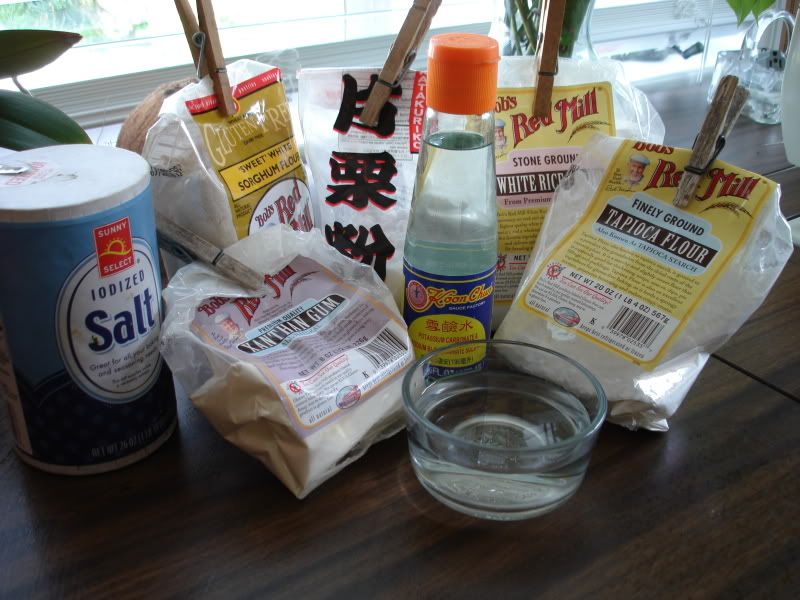

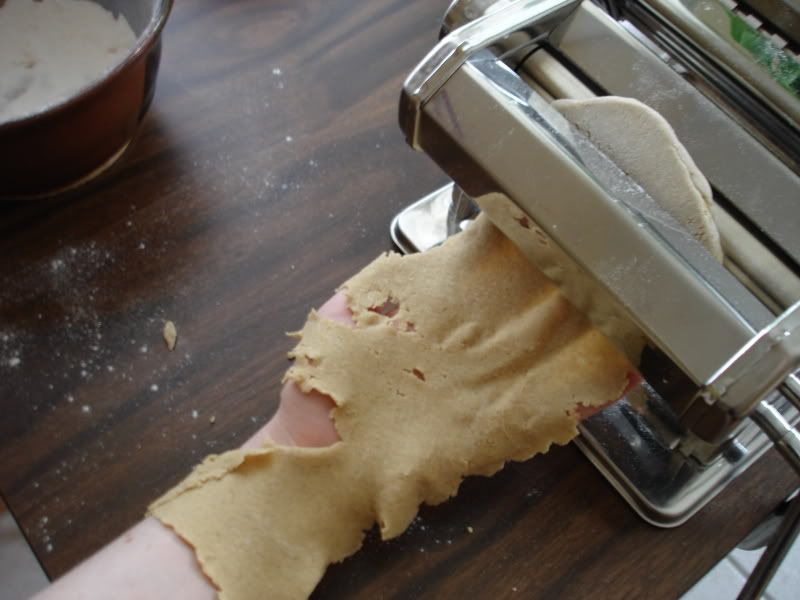
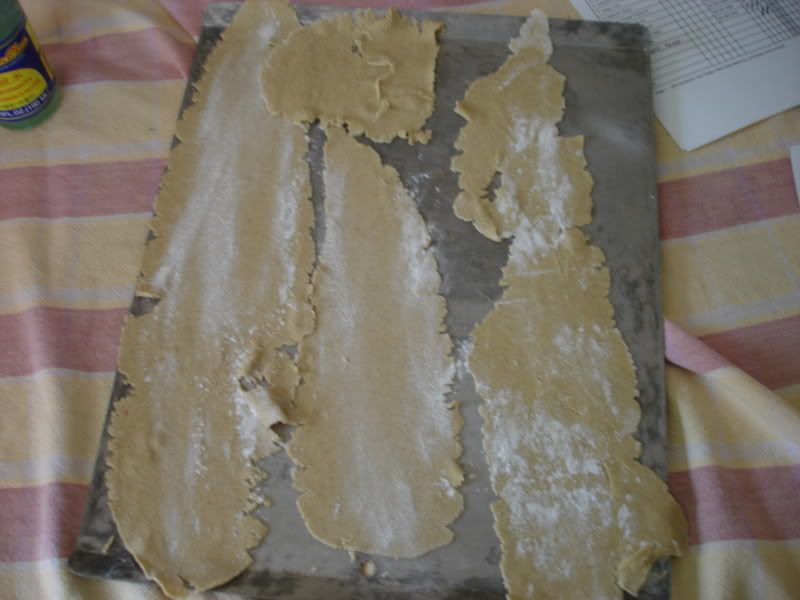
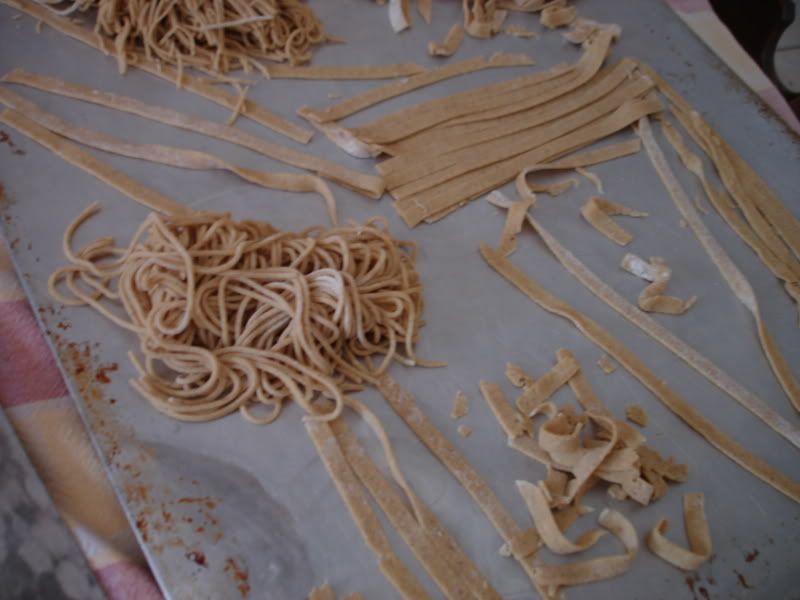
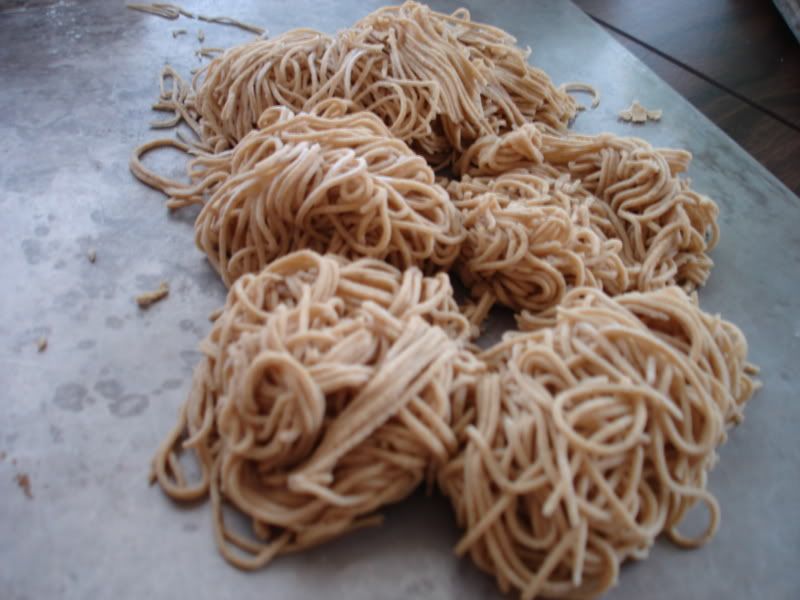


No comments:
Post a Comment